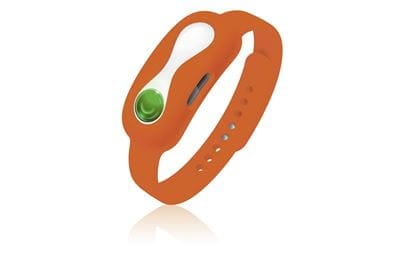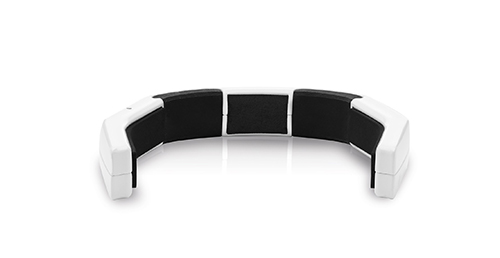Staying well and wireless
The wellness industry has become big business, with wireless technology and wearables helping power the boom
By Thomas Søderholm, Business Development Manager – Health, Nordic Semiconductor
Almost a year on from first reports of COVID-19 emanating from Wuhan City in China, the health of the world’s population remains headline news. The pandemic has seen to it that our collective health—in equal parts physical, mental and social well-being—has never been so important, or so tested. But while staying healthy is paramount, the business of wellness is met with more suspicion, and it is the industry’s own fault. Wellness has been hijacked by profiteers and marketers that have inundated us with healing crystals, kombucha shots, and vitamin IV drips. In contrast, ‘real’ wellbeing is the process of maintaining health by practicing good exercise, nutrition, sleep and social contact habits, and increasingly wireless technology is helping us achieve it.
According to the Global Wellness Institute (GWI), a non-profit organization promoting wellness research and education, despite concerns over privacy, people are progressively using devices to manage their personal wellbeing, including monitoring diets, sleep patterns or emotional health, as well as managing exercise. Consumers are also accepting wellness like never before. “A profound shift in the way people consume wellness is underway: once a luxury … it’s now being infused into every aspect of daily life,” says Katherine Johnston, Senior Research Fellow, GWI. “And the spend on proactive healthy choices—on wellness—will continue to comprise a greater percentage of massive multi-trillion industries.” Of which, of course, the tech sector is one.
Wearable wellness
Wearable tech, a technology barely 10 years old, is now huge business. According to consumer data firm Statista, the number of connected wearable devices worldwide more than doubled in the three years between 2016 and 2019, increasing from 325 million to 722 million. By 2022, that number is expected to pass one billion. And as demand for personalized wearable wellness has dramatically increased, so to has the sophistication of these devices. Counting steps is all well and good, but people now want solutions that not only monitor their activity levels, but also their fitness, heart rate, blood oxygen saturation, muscle oxygen, sleep, as well as emotional and mental health. According to Pricewaterhouse Coopers (PwC) research, consumers expect their wearable devices to help them live longer (70 percent), maintain a healthy weight (63 percent), and reduce their health insurance premium (62 percent). Fortunately, technology is keeping pace with demand.
A broad range of sensors are already widely available that can capture measurements that combined with sophisticated machine learning algorithms can be presented to the user as actionable health and activity data. Beyond accelerometers and gyroscopes for tracking our movement, modern wearables can, for example, be embedded with biosensors to track brain and heart activity, galvanic skin response sensors to measure sweat gland activity and therefore an individual’s stress levels, as well as heart rate and oximetry monitors to measure fitness or identify a poor respiratory response to exercise.
As the sensors have become more sophisticated, so by necessity have the System-on-Chips (SoCs) that both power them and provide them with smartphone connectivity. The sensors continuously churn data and demand the services of a processor capable of rapid Digital Signal Processing (DSP) and Floating-Point (FP) arithmetic to transform it into accurate information for the user. For example, Nordic’s high-end nRF5340 SoC features a dual-processor hardware architecture with a dedicated application processor to meet the complex computational requirements of the next generation of sophisticated wearables, as well as a network processor optimized for low power radio operation to look after the wireless connectivity.
Eat well, de-stress and sleep
While wireless SoC makers such as Nordic have extended the capabilities of their solutions, developers of wearables for health and wellness have not stood still either. For example, Nordic customers have recently developed sophisticated products that beyond fitness help users eat clean, de-stress, sleep better, and even recover from injury. U.K.-based DnaNudge launched its DnaBand that uses a combination of the user’s DNA and wireless technology to help people make healthier food choices. With the user’s genetic profile loaded onto the wearable, they can then scan the barcodes of approximately half a million food products and instantly have the device determine if the food is suitable for them based on their unique genetic traits and activity levels.

The DnaBand
While DnaNudge is designed to address two key wellness factors in nutrition and exercise, New York-based, MDCN Technologies, has developed a solution that targets two others. The company’s NeoRhythm headband is designed to stimulate brainwaves to help the user sleep better and de-stress. Five magnetic field-generating inverted coils target specific areas in the brain or spinal cord and generate specific dominant rhythms that mirror the mind’s naturally-occurring frequencies that humans associate with specific activities. The wearer then selects from a range of stimulation programs—for example, improved sleep, relaxation, meditation or pain control.

The NeoRythm headband
These are two examples of many, and we expect to see more innovative examples of wearable wellness tech emerge in the coming months and years. Of course, wearables are only part of the wellness solution, they can’t do exercise, healthy eating, and sleeping for you. But they can act as a powerful enabler, supported by ever more sophisticated sensors and wireless technology.